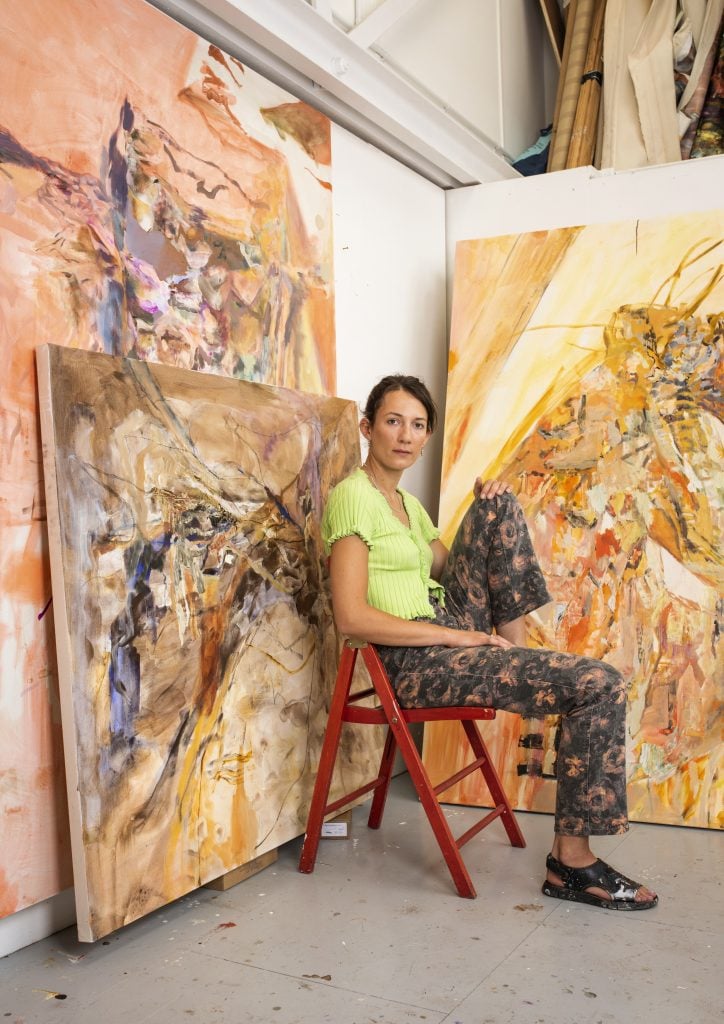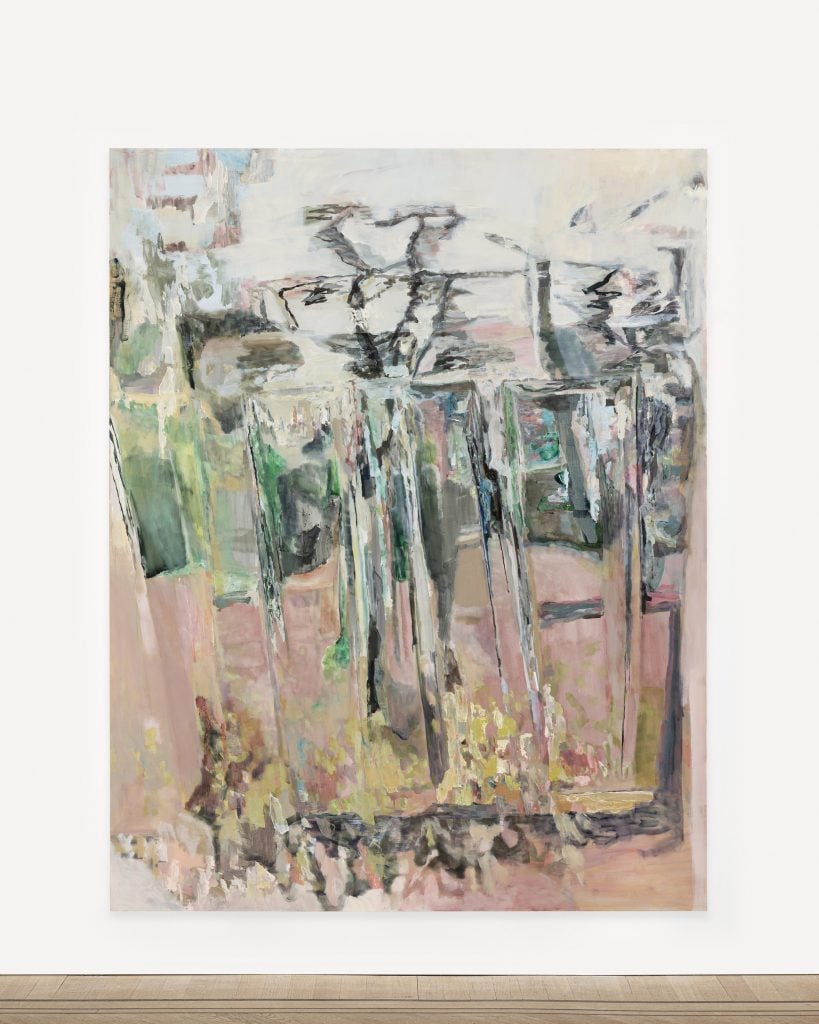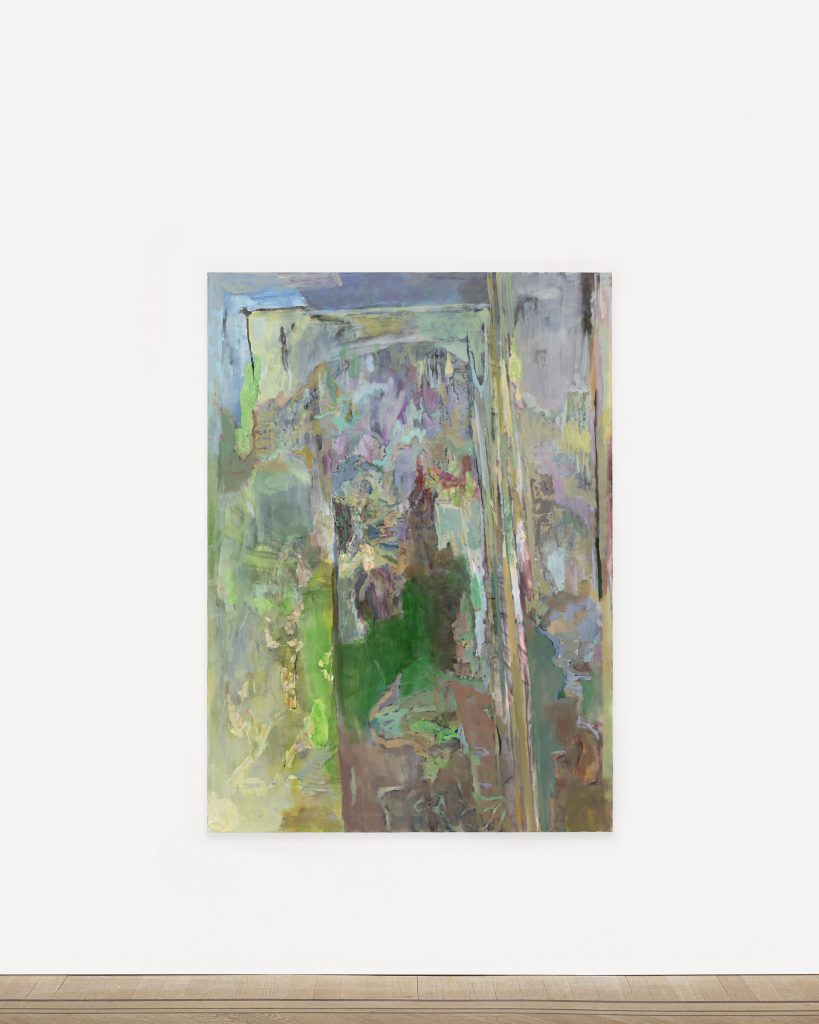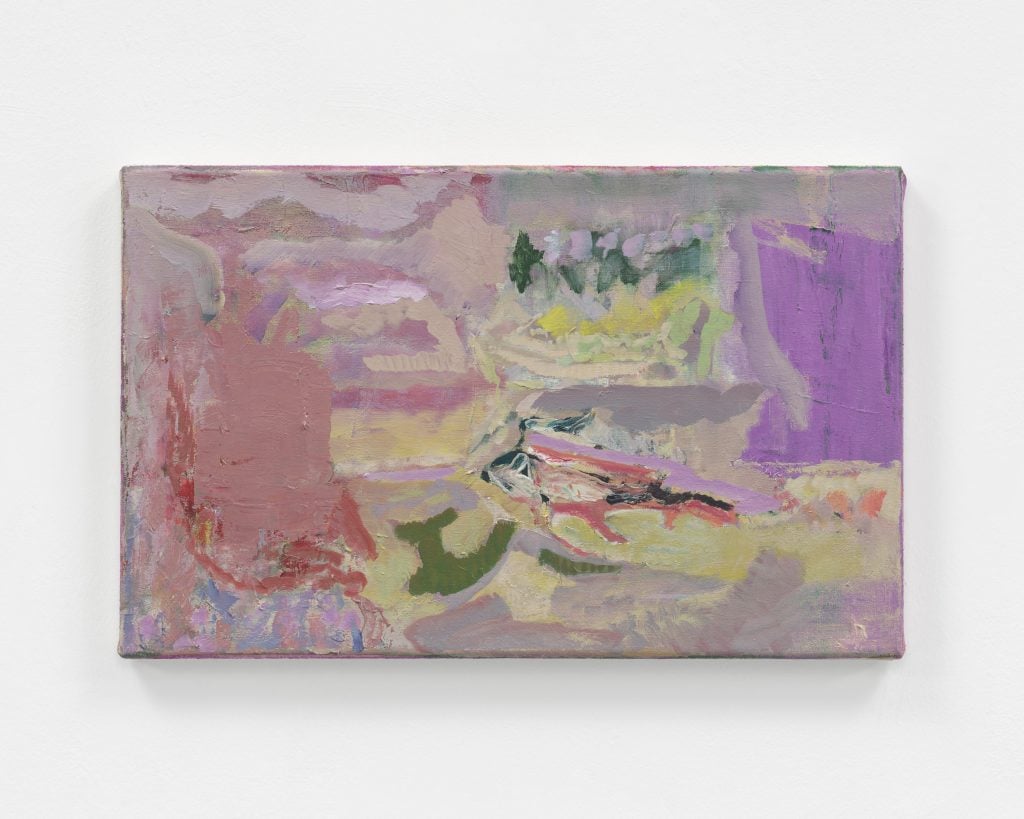Gallery Network
7 Questions for British Artist Francesca Mollett on How Fireflies, Canals, and Ancient Grottoes Inspire Her Light-Filled Canvases
The artist's solo show 'Francesca Mollett: Halves' opens at Grimm Gallery, Amsterdam, this week.

The artist's solo show 'Francesca Mollett: Halves' opens at Grimm Gallery, Amsterdam, this week.

Artnet Gallery Network

British painter Francesca Mollett (b. 1991) has a practice centered on the close study and investigation of the myriad facets of space—from the built environment to the quality of light and fleeting reflections. Transmuting the surface of the canvas into something that appears malleable and shifting, Mollett’s compositions foreground the subjectivity of perception and operate as a site of meaningful exchange between painter and viewer.
Based in London, Mollett graduated with her MA in painting from the Royal College of Art in 2020, and has been the subject of solo shows both in the U.K. and abroad. This week, her solo show “Francesca Mollet: Halves” opens with Grimm Gallery, Amsterdam, featuring the artist’s most recent body of work.
Ahead of the exhibition, we reached out to Mollett to learn more about what’s in store, and how the city of Amsterdam figured into her creative process.

Francesca Mollett, Short cut (2023). Photo: Peter Mallet. Courtesy of Grimm Gallery, Amsterdam, London, New York.
Your solo show with Grimm Gallery, Amsterdam, opens tomorrow. Can you talk about the themes of the show?
The show draws attention to a familiar sensation: how reflections cause images to become split, multiplied, and distorted, and create a merging of body and environment. Growing naturally from a continued fascination with how to represent surface, these paintings deal with dual spaces; a close depiction of the surface of a door at the same time as what is reflected upon it. The paintings originate from close observation. By attempting to make visible what I’ve noticed, their qualities become enhanced or transformed within paint, moving into abstraction, translating these relationships into ones that may be recognized, but not easily nameable. For me, the show essentially deals with perception and how language can transform something by trying to get close to it.
What role does the city of Amsterdam play in your recent body of work, or the idea of place within your practice?
I came to visit Grimm gallery in November to see the space, but then came away with a new idea of how to approach the show—which I wasn’t quite expecting! The doors lining Amsterdam’s streets continue the reflection of the canals along their glossily painted surfaces. Acting like water, their suggestive qualities led to them becoming a site-specific starting point. The French writer Annie Ernaux describes the “je” (I) as “not an identity but a place, marked by human experiences and events” and connected is the idea that a place could be like a collective “I.” For me, responding to a place creates freedom to explore painterly language. The subject’s visual qualities can hold an inherent symbolism or an existing history, and so when you look at the paintings, it’s as if I am showing all that’s visible at its present moment, but behind it there is an awareness of what’s built into it.
Previously, I’ve often looked at places where light interacts in a specific way, for instance, I have used sites of ancient wells, grottoes, and tunnels—low-lit spaces where the entry of light has allowed for strange shimmers. I’ve also responded to plants, such as phosphorus moss and moths, looking at how their biology affects their movement or interior light. I like to focus on a motif that allows for a way to think about painting; perhaps not a metaphor exactly, but a kind of context or set of circumstances, in which to frame an idea about what it can do.

Francesca Mollett, Vanishing backs (2023). Photo: Peter Mallet. Courtesy of Grimm Gallery, Amsterdam, London, New York.
Are there any specific ideas or impressions that you hope viewers of the show take away with them?
I’d like for the viewer to feel an intensity of connection and potentiality within the things around them. When I leave exhibitions, one of the most stimulating feelings is to come out and feel like you have internalized the perception of the artist; you start seeing scenes as if they were paintings—I would love for this to happen.
I also hope to convey the idea of a “shimmer”: each painting wants to produce its own kind of shimmer, but it then also originates from a shimmer out in the world. The shimmer is both a visual seen effect and an intangible, close to revelatory, moment.
Can you tell us about how you create your paintings from a technical perspective?
My paintings begin very fluidly and quickly, then slow down. I begin with drawings that help me imagine the painting, from which I sketch out an initial composition on canvas with charcoal, acrylic paints, or thinned oil paint. I then start exploring marks with oil paint, almost tentatively at first. Working out relations between different areas, I look closely at how each passage relates to the next; how the motion or texture tells you something about the other. The paintings need time to breathe and accumulate direction. I wipe elements of the paintings, leaving an impression or stain, allowing for more subtle shifts, and then obtusely, I often use a palette knife which has less controllable elements and explores how color’s texture can alter in its entwining with another.

Francesca Mollett, Lining / spilt shell (2023). Photo: Peter Mallet. Courtesy of Grimm Gallery, Amsterdam, London, New York.
From a conceptual standpoint, what does your creative process look like? Do you start with a fully formed idea or is it more intuitive as you go?
The idea needs to be substantial for me to begin, but it develops within the painting; I would say it’s intuitive and experiential. If I try to force an idea on something it wouldn’t work, or it would be too literal—it comes out of painting and looking. The continual practice of reading helps to develop more of an understanding of what I want to do. Sensations and explorations with novels influence thinking about the emotional or relational position I want to create; writers such as Christa Wolf, Jhumpa Lahiri, Mieko Kawakami, Tony Morrison, Fanny Howe, and Elena Ferrante.
Where do you most commonly find inspiration? Are there any artists or movements, historical or contemporary, that have specifically influenced your work?
I turn to specific paintings with a desire to create new touches and forms. It tends to be individual practices that share an ability to contain visual surprises within the image. I am often intrigued by how the artists reached the precise language of each painting, such as Prunella Clough, Susan Rothenberg, Helen Frankenthaler, Varda Caivano, Tomma Abts, Charline von Heyl, Heidi Bucher, and Winifred Nicholson. At the moment, I am on a residency in Turin, so I have been discovering sculptures by Leoncillo Leonardo and paintings by Gigi Chessa in the local museum. Looking at Marisa Merz’s work, I’m enjoying the fluidity between domestic and industrial materiality, and finding it useful to see how the Renaissance and Byzantine artists influenced her representations of Madonna and angels.

Francesca Mollett, Halves (2023). Photo: Peter Mallet. Courtesy of Grimm Gallery, Amsterdam, London, New York.
Is there anything you are working on now, or hope to work on next, that you can tell us about? Any themes or ideas that you’d like to engage with that you haven’t yet?
I am currently on a residency in Italy where I came to look at and think about fireflies, but I am also working from the River Po, where low-level flooding has left markers on the paths. I am going on a residency to Scotland in autumn with the Roberts Institute of Art, and we are currently developing ideas in more detail, but I would like to investigate iridescence, something I have touched upon before but want to investigate further.
“Francesca Mollett: Halves” is on view at Grimm Gallery, Amsterdam, June 2–July 22, 2023.